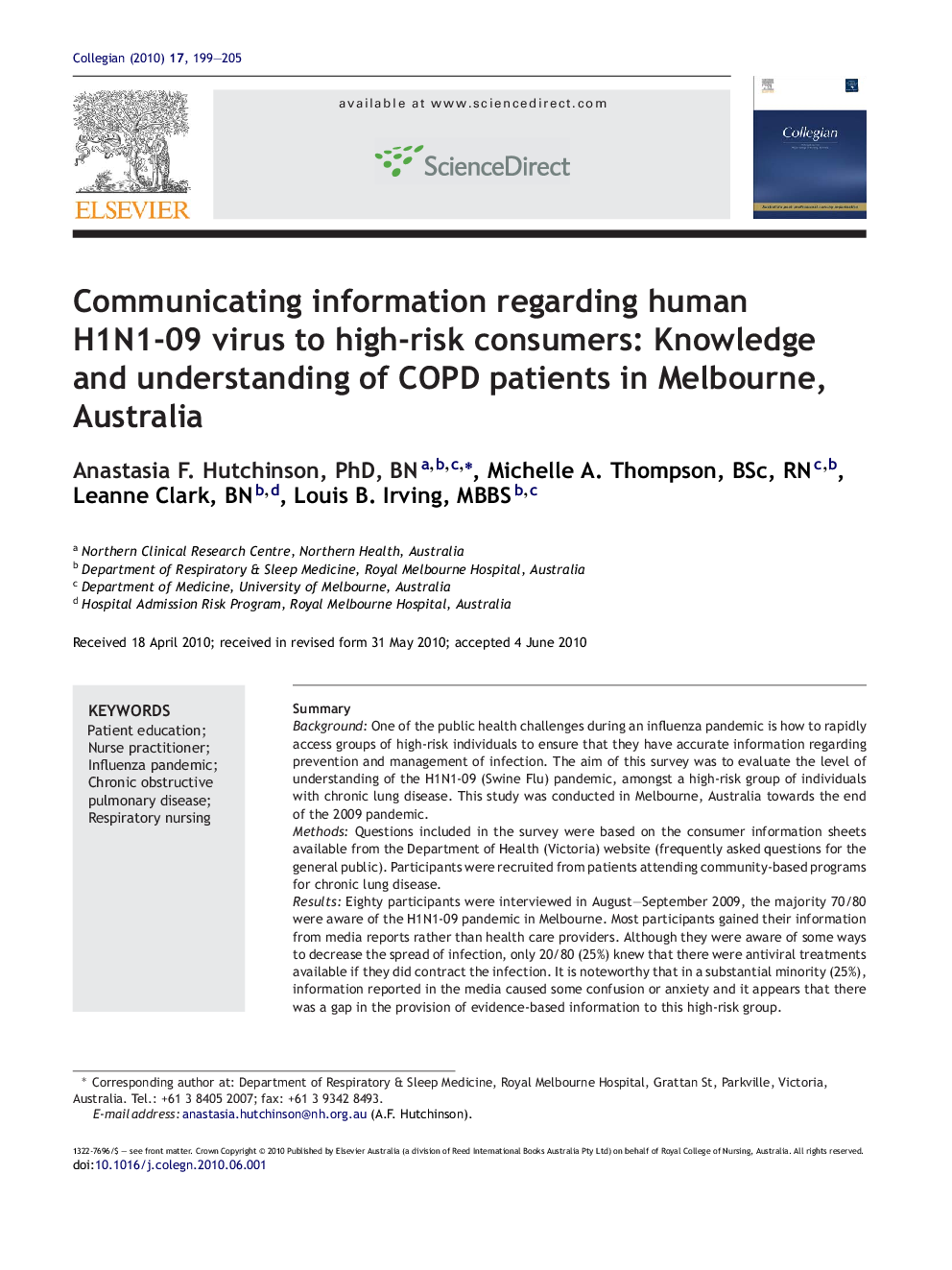| Article ID | Journal | Published Year | Pages | File Type |
|---|---|---|---|---|
| 2646744 | Collegian | 2010 | 7 Pages |
SummaryBackgroundOne of the public health challenges during an influenza pandemic is how to rapidly access groups of high-risk individuals to ensure that they have accurate information regarding prevention and management of infection. The aim of this survey was to evaluate the level of understanding of the H1N1-09 (Swine Flu) pandemic, amongst a high-risk group of individuals with chronic lung disease. This study was conducted in Melbourne, Australia towards the end of the 2009 pandemic.MethodsQuestions included in the survey were based on the consumer information sheets available from the Department of Health (Victoria) website (frequently asked questions for the general public). Participants were recruited from patients attending community-based programs for chronic lung disease.ResultsEighty participants were interviewed in August–September 2009, the majority 70/80 were aware of the H1N1-09 pandemic in Melbourne. Most participants gained their information from media reports rather than health care providers. Although they were aware of some ways to decrease the spread of infection, only 20/80 (25%) knew that there were antiviral treatments available if they did contract the infection. It is noteworthy that in a substantial minority (25%), information reported in the media caused some confusion or anxiety and it appears that there was a gap in the provision of evidence-based information to this high-risk group.ConclusionIn the context of future pandemics, respiratory-outreach nurses and educators could be used to promote pertinent information regarding infection prevention and management to high-risk individuals. Currently this appeared to be an under-utilised means of imparting pandemic information to consumers.
